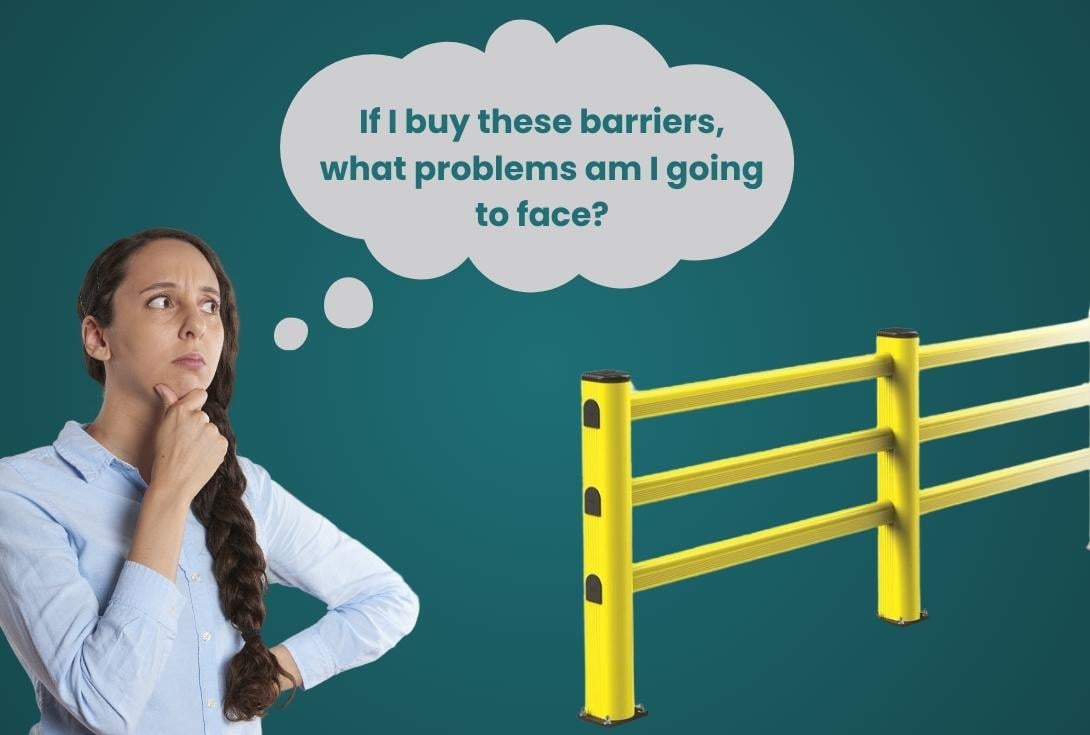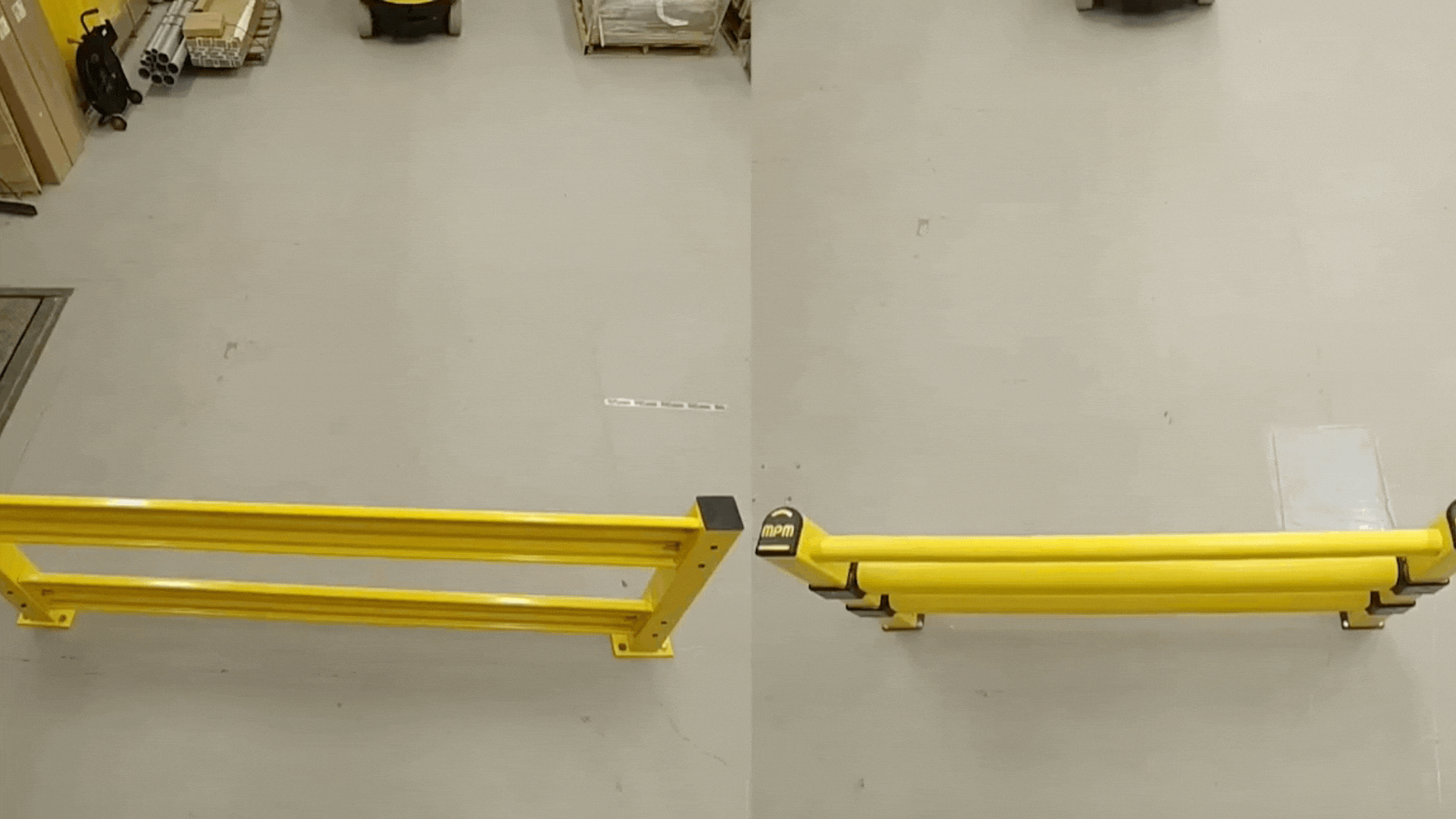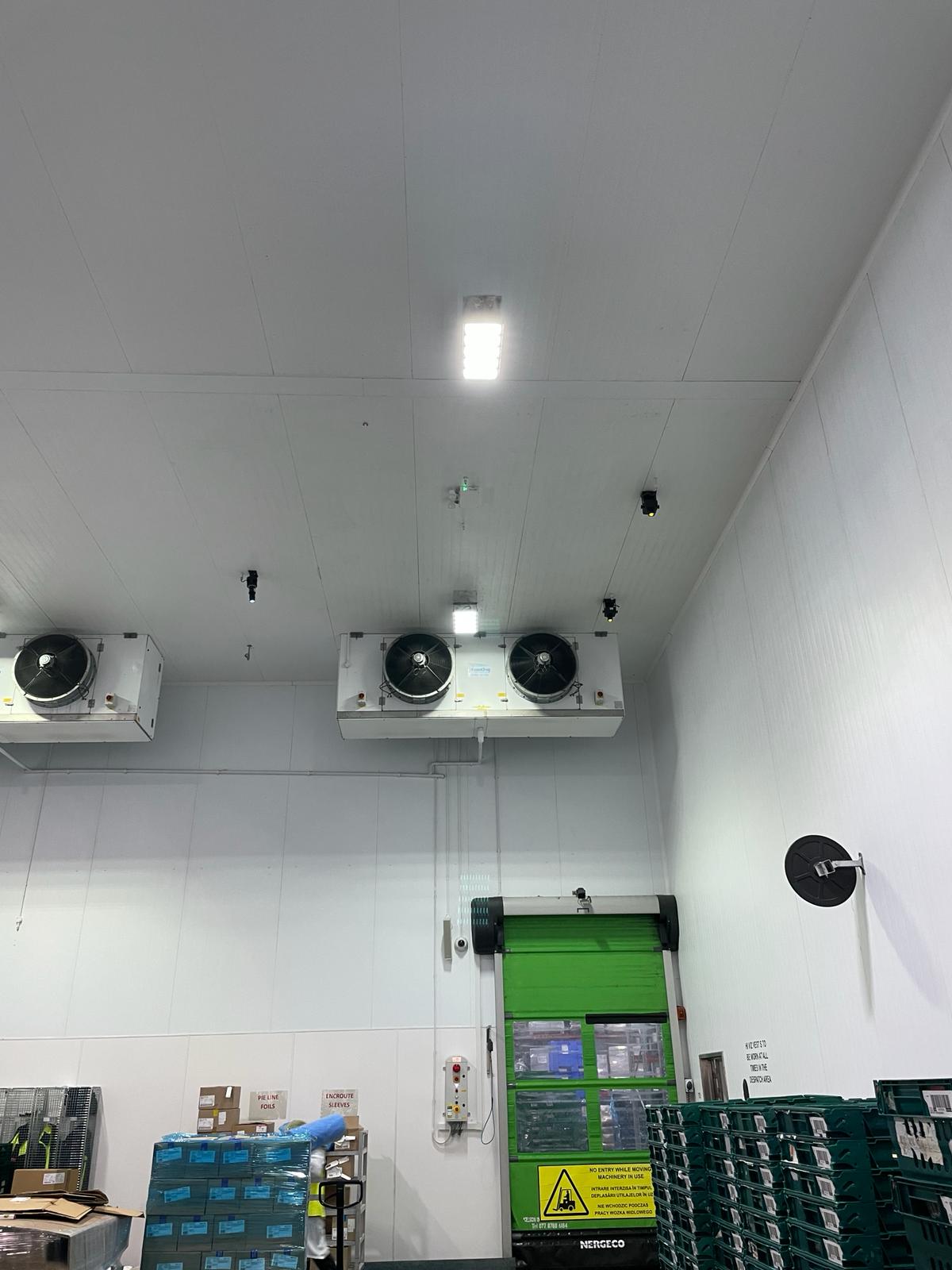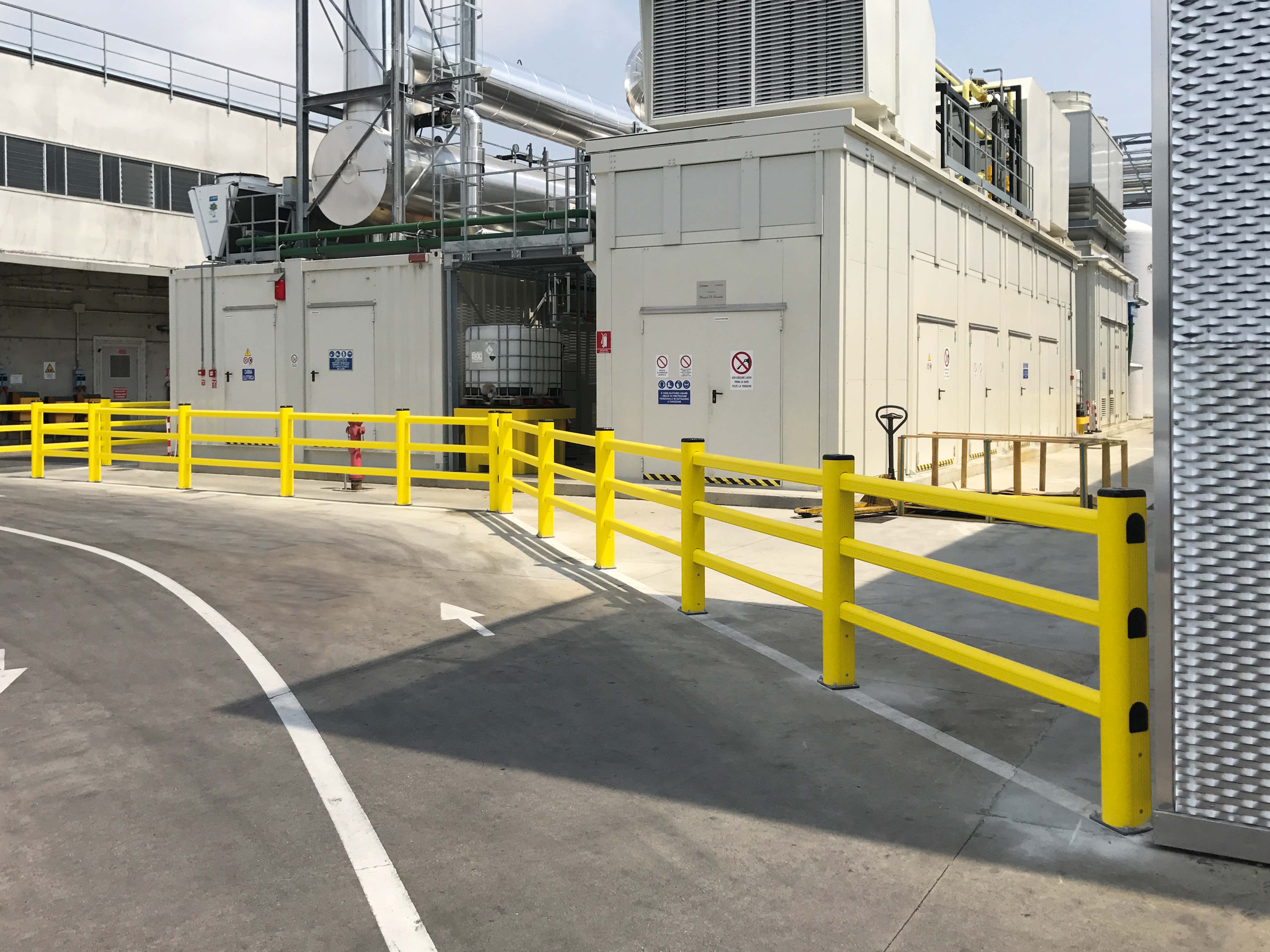The Top 5 Problems with Flexible Impact Barriers
 By
Alana Graham
·
4 minute read
By
Alana Graham
·
4 minute read
If you’re looking around to find flexible impact barrier for your factory, you’ll notice there are a number of different manufacturers with different offerings. It may be challenging to try and find the best one that suits you. In this article, we’re going to discuss the top five problems with flexible barriers and the solutions. The top five problems are price, space required, recyclability, fire resistance and repositionability.

Price
One big problem, no one likes to talk about price. Compared to a typical steel barrier, a flexible industrial barrier will always be at least double the cost (initial outlay). The reason why the flexible industrial barrier will always cost more than a typical steel barrier, is because steel has a strength and stiffness way higher than any type of plastic. Flexible industrial barriers are found in virtually all ‘World-class’ facilities, due to the fact that they offer a similar impact protection to metal, but come with less damage to the forklifts, floor and the barrier. If you are looking for the cheapest possible barrier for your factory or warehouse, then you should consider a steel barrier. Otherwise, a flexible industrial barrier will be the lowest long-term cost. A steel barrier such as an Armco-type barrier becomes considerably more expensive than a flexible industrial barrier, the first time it is hit with a forklift truck or similar. This is because a steel barrier will deform, rip the bolts out, damage the floor, and also damage the forklift truck. By contrast, flexible industrial barriers will absorb the impact to avoid directly transferring the stress through to the bolts/concrete floor. It’ll also do little or no damage to the forklift truck, so in conclusion, a steel barrier will cost half the amount of a flexible industrial barrier until the day comes that the barrier is struck with an FLT, and then it becomes more expensive.

Space Required
Virtually every factory, we’ve been to across the UK have said that space is a premium. A flexible industrial polymer barrier can take up to 3 or 4 times more floor space than a typical steel barrier and the reason for this is because a flexible industrial polymer barrier performs two functions. Firstly, it is designed to protect whatever you are segregating, but secondly, it is designed to absorb the impact to avoid transferring the stress to the concrete which therefore reduces the damage on the forklift truck. This means that flexible barriers have 2 objectives; to protect people and assets, and to not damage the barrier every time an impact happens. Whereas steel barriers only have 1 objective: to protect the people or assets from being impacted. Because polymer barriers are designed to absorb the impact and leave the barrier intact, they have to be manufactured from a polymer which is flexible and does not permanently deform in the event of an impact. To gain maximum impact resistance, the flexible polymer requires the profile or section to be a round profile at a considerable diameter. This is why most flexible industrial polymer barriers, take up lot of floor space in your factory. At Clarity, we are well aware that this is not ideal for most factories, and we are pleased to be able to offer the MPM range of flexible industrial barriers. Because they are made from a significantly stronger polymer than the typically used HDPE polymer, it also allows MPM to manufacture these barriers with a much smaller footprint whilst still retaining the desired, impact resistance for protecting your people and assets.
Recyclability
One of the big topics in many companies is sustainability. If you are looking to meet sustainability goals within your company, then a polymer barrier may not seem to be the right choice, as it is made of plastic, and most people try to steer clear of these.
However, a steel barrier actually uses a lot more energy to manufacture, and in fact, many of them are shipped all the way from China, and therefore have a large carbon footprint. By contrast, the MPM barriers are manufactured in Italy and the manufacturing process uses renewable energy supplies and all the water used on site is reused, making these polymer barriers a more sustainable alternative to steel barriers. The MPM barriers are not made from fully recycled plastic due to the fact that they cannot be sure of the origin of the material, which means the usual standards of impact resistance cannot be guaranteed. These barriers are, however, fully recyclable.
Fire Resistance
Since the Grenfell Tower fire, significantly more interest has been taken about the fire- retardant or fire-resistance of the materials used in construction and your barrier requirements.
Many companies have transitioned from steel barriers to flexible industrial polymer barriers and in doing so actually introduced a product which can burn. One of the advantages of MPM flexible industrial barriers, is that they have been manufactured with a V0 fire rating, meaning they are one of the safest industrial barriers from a fire risk perspective. Many of our customers are handling, potentially flammable materials, such as spirits or even paper. If fire resistance is a concern for your factory, you are in safe hands with an MPM barrier.
Repositionability
In nearly all of our customer production areas, the production layout often changes according to marketing demand. For example, a bottling line may get an upgraded label or filler, resulting in the different area of production, becoming the bottleneck, so it makes sense to move things around to free up different areas. One of the challenges with doing this with some flexible industrial barriers, is that they are prefabricated to size and not readily adjustable. To overcome this problem, MPM protections have developed their barrier system to be completely modular allowing for barriers to be adjusted in size on site. If being able to adapt and change, according to your production, environment and demands is important to you, then the modular installation method of an MPM barrier will be music to your ears.
The purpose of this article was to address the top five issues that we see every day with flexible industrial barriers. If you are in the market, looking for industrial barriers, and you want to know the typical problems, people face when trying to choose the right industrial barrier for them, this article should help give you an understanding of the typical issues we see on a daily basis. If this article was interest to you and you want to see more information on pricing or you would like us to measure up for your requirements, please don’t hesitate to get in touch.




